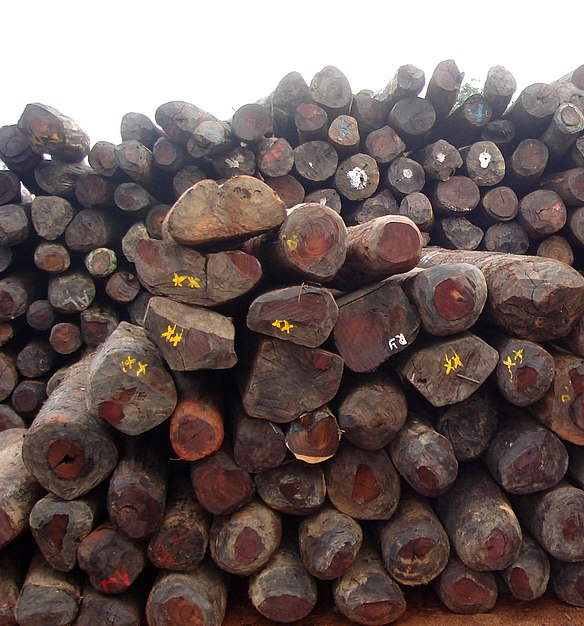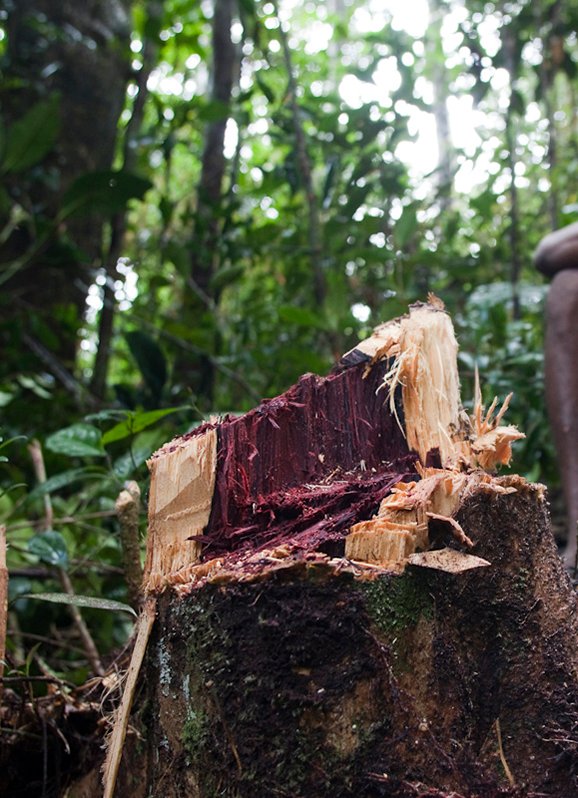THE CONSCIENTIOUS ENVIRONMENTALIST
we talk freely, informed, sciency, but always opinionated
The risk of Madagascar's "national" precious woods trade
by Mark W. Roberts, Derek Schuurman, Lucienne Wilmé, Patrick O. Waeber, 7 November 2023
The fate of what are arguably the world’s most valuable and coveted timber stockpiles will be discussed at the 74th meeting of the Standing Committee (SC74) of the Convention on International Trade in Endangered Species of Wild Fauna and Flora (CITES). Madagascar has removed the so-called “controlled” stockpile (~30,000 logs) from the protections of CITES by miraculously declaring that the logs will be exclusively used for domestic purposes. Madagascar claims that whole logs will be released from these stockpiles for: 1) governmental construction 2) for “artisans” to create “handicrafts” weighing less than 10 kilograms to be traded locally.
Yet, behind closed doors, it's widely anticipated that these logs will find their way into international markets. So, can anyone honestly claim this isn't international trade in disguise?
At CoP 19, in Decision 19.71 the Parties held that: “Madagascar shall: a) strengthen the management of all Dalbergia spp. and Diospyros spp. timber stockpiles in Madagascar (including through traceability and control systems), request financial and technical assistance therefore, and submit regular updates on audited inventories and independent oversight mechanisms, for consideration and further guidance from the Standing Committee: b) provide reports on progress on the implementation of paragraph a) of this Decision to the Secretariat 60 days before the 77th and 78th meetings of the Standing Committee.”
CoP19 Decision 19.73 directs the Standing Committee to “review reports from the Secretariat on the implementation of Decisions 19.71 and 19.72 and make recommendations to Madagascar as appropriate.”
Risk I: Domestic use and trade of Dalbergia spp. and Diospyros spp. will cause illegal international trade. It was Madagascar that insisted on the phrase “strengthen the management” of the stockpiles at CoP19. In fact, there is negligible management of these stockpiles. Madagascar has yet to secure many of the official stockpiles, or address management of the “undeclared” and “hidden” Dalbergia spp. and Diospyros spp. stockpiles in Madagascar or create adequate traceability and control systems. The failure to secure, audit, or even identify the undisclosed and hidden stockpiles, coupled with lax measures for official stockpiles, creates a potential laundering mechanism for the hundreds of thousands of logs in these undisclosed stockpiles.
Risk II. Freshly cut rosewood and ebony from ongoing exploitation activities will likely be laundered through the official stockpiles. Deforestation continues in Madagascar's Protected Areas through various practices, including slash-and-burn agriculture, selective logging, fuel wood collection, mining-related clearance, and illegal logging for potential domestic and international trade. Legalizing domestic use without securing these stockpiles could encourage the exploitation of the few remaining rosewood and ebony trees, as fresh wood exceeds the value of the decade-old logs in the stockpiles. In the absence of adequate control and traceability systems for the “national” trade, felling of live trees will have negative impacts on Madagascar’s forests and biodiversity.
Risk III: The absence of a system for controlling and tracing the logs released to artisans for handicraft production, as well as the resulting 10 kg “handicrafts,” raises significant concerns about potential misuse and illegal international exploitation. Madagascar lacks key definitions and safeguards to regulate trade in precious wood “handicrafts.” Madagascar has yet to propose criteria for: 1) qualifying artisans, 2) setting withdrawal quotas, 3) implementing export controls to prevent illegal international trade, 4) defining what constitutes a “handicraft,” 5) ensuring that the entire logs released will be made into handicrafts, 6) exporting “handicrafts,” 7) and safeguards ensuring that these handicrafts aren't exploited as material sources for refabrication in traditional rosewood and ebony industries and nations.
Recommendations
We urge the Standing Committee, potentially utilizing an intersessional working group, to formulate and implement critical legislative, regulatory, and enforcement measures aimed at strengthening oversight and control over Madagascar's envisioned domestic markets, while concurrently preventing the proliferation of illegal international trade. The Committee should prioritize addressing the following key issues to support Madagascar in safeguarding domestic use and trade from infringing upon CITES regulations:
1. Set up an operational third-party independent monitor to supervise and ensure compliance with all facets of domestic use or trade.
2. Secure the official stockpiles and establish a reliable inventory and marking system of all logs in the stockpile before use or trade.
3. Regrouping all logs in the “official” stockpiles into a single secured location should be considered to counter the threat that these stockpiles will be used to launder other logs and freshly cut trees, with legal use or trade only being allowed from wood in that single location.
4. Develop a robust control and tracking system for the logs released for domestic use or trade under the auspices of an independent oversight body.
5. Create a documentation and marking system to ensure proof of legal acquisition of all logs used in construction or for artifacts made with logs from the official stockpiles.
6. Define qualifying projects for "governmental" construction and transparent procedures to be used by the government for a) the selection of the people who will undertake the construction activities and b) for the selection and tracking of logs to be used in the construction activities.
7. Define clear and equitable criteria, possibly involving a licensing system and background checks, to identify individuals eligible as "artisans" authorized to extract logs from official stockpiles.
8. Set clear criteria for determining the definition of a "handicraft" permissible for production using these logs and ensuring that the logs released to make handicrafts are not channeled into the provision of new supply materials for foreign commercial ventures dealing in these precious woods.
9. Establish a mechanism to guarantee that every log provided to an artisan is fully utilized for crafting "handicrafts," and establish a tracing system linking each handicraft to a particular log to establish legality of origin.
10. Report to SC78 and SC79 on the implementation of these measures.
This is Message in a Capsule #6
Image 1: rosewood stocks; by L. Taylor
Image 2: rosewood stump. Source: EIA-US, with permission

